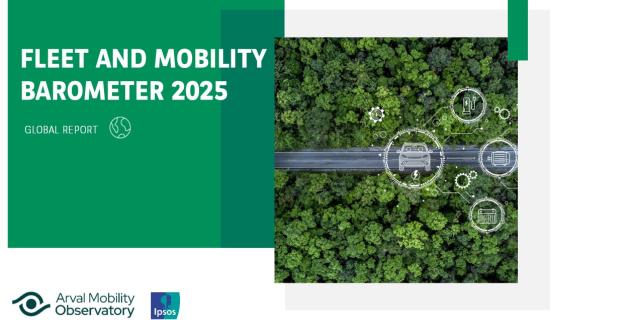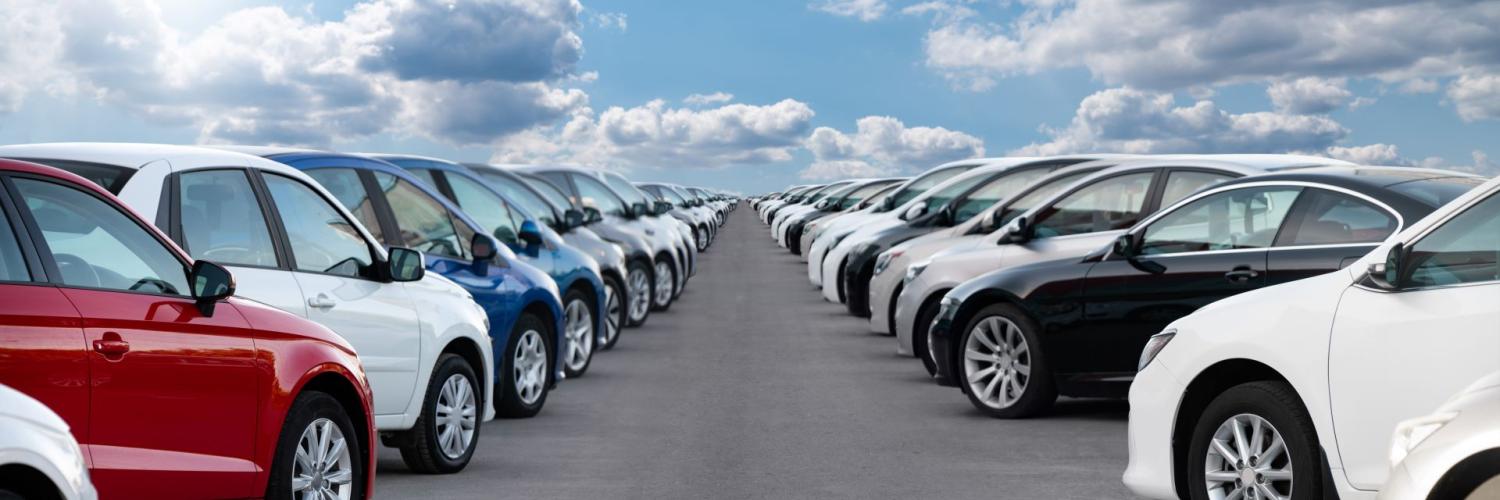Although the European automotive market has historically been dominated by legacy brands that are now household names (such as Ford, Toyota, Volkswagen, and more), we’re now witnessing a clear shift towards new OEM entrants.
OEMs, short for Original Equipment Manufacturers, are the companies that manufacture parts and equipment for new vehicles, and which may be marketed by another manufacturer. They play a crucial role in the automotive industry, in Europe and globally.
In practice, new OEM entrants in the European market are both new brands and established businesses that had a minimal presence in Europe ten years ago. Their entrance is characterized by substantial sales volumes and, sometimes, an innovative approach to market engagement, challenging traditional industry norms and distribution models.
New OEM entrants were often previously unknown on the EU market, contrary to legacy OEMs, such as Volkswagen AG or Stellantis (with Peugeot, Opel and Citroën as some of its most popular subsidiaries).
Tesla stands out as a prime example of a company that has had a strong impact on the European automotive sector. Tesla's approach, characterized by a direct-to-consumer sales model and a no-discount policy, has transformed traditional automotive sales and distribution channels in Europe.
In fact, its robust sales performance since 2020 (where 2021 was marked by a more than 70% year-on-year growth in passenger car sales, compared to 2020), combined with the entry of other new OEMs in the European market, show a strong consumer demand for innovative and more sustainable vehicles.
The evolution of new OEM entrants in Europe from 2020 to 2024
The period from 2020 to 2024 marked a significant shift in the European automotive landscape, characterized by the entry of new Original Equipment Manufacturers (OEMs) that challenged the traditional hierarchy and dynamics of the industry.
It’s not easy to gain the trust of European consumers — and retaining it takes even more effort and resources in terms of investments, certifications, and know-how.
Nevertheless, a number of new OEM entrants have gained a foothold in the European market in the past few years. For the period between 2020 and 2022, more than ten new electric vehicle OEMs have established themselves in Europe, such as BYD, MG and Polestar. Others are planning to follow suit and expand to Europe in the near future.
As McKinsey & Company point outs, their go-to-market strategies vary significantly:
- Direct-to-consumer sales with the brand’s own outlets, such as Xpeng, enabling them to own their offline and online channels and build a direct relationship with customers
- Partnerships with local retailers, providing OEMs with the sales channels of established partners and some control over the customer experience
- Import-only models, in which companies (such as, for example, BYD) sell vehicles to wholesalers, who are fully responsible for marketing, sales, and customer service
- Combined models of imports and partnerships with retailers, where OEMs do not sell directly to customers but still seek out interactions with customers
The presence of new OEM entrants in Europe accelerated the industry's shift towards electrification and digitalization, compelling traditional OEMs to tighten and step up their own innovation processes and adopt more agile and sustainable practices.
Sustainability is a major focus. Tesla’s entry into the automotive market with its all-electric cars prompted the established automotive manufacturers like Volkswagen and BMW to double down on their own electric vehicle programs.
Legacy OEMs have also established partnerships with Chinese companies to support production of some of their models. For example, that’s the case of the BMW Shenyang Production Base, which uses 100% renewable energy and thus helps BMW meet its corporate carbon-reduction goals.
This disruption also intensified competition and expanded the range of options available to consumers; it could also push down market prices for both EVs and ICE vehicles.
What are the factors that drive the emergence of new OEMs?
There are several interlinked factors that contribute to the emergence of new OEMs in Europe; overall, these factors have helped reshape the market, pushing the industry towards a stronger focus on consumers and higher innovation.
The market, technological, and regulatory trends that contribute to the emergence and establishment of new OEMs in Europe include:
- The increasing demand and availability of electric vehicles (EVs): The growing consumer demand and uptake of electric vehicles (reaching a 22% market share for new vehicles in the EU in 2022) has created a fertile ground for new OEMs specializing in EVs.
- Technologies enhancing safety and connectivity: Technological advancements have generated new opportunities for OEMs specializing in these areas. Consumers' increasing interest in vehicles equipped with advanced driver assistance systems (ADAS) have given new players who focus on software and hardware (rather than mostly on hardware) to gain consumer trust.
- A drive towards sustainability: The push towards sustainability (in which Europe is a global leader) has influenced consumers’ preferences related to new vehicles. This benefits new OEMs who can be more agile when building their manufacturing processes from the ground up.
- Advancements in battery technology: Investments in battery technology and Li-ion alternatives have been crucial in enabling new OEMs to compete with traditional automakers. Investment in battery technologies has traditionally been high in Asia, which gives new OEMs a competitive advantage. However, with the introduction of The Net-Zero Industry Act, the EU aims to step up the local manufacturing of clean technologies, including batteries.
- Emissions standards and incentives for EVs: Stricter emissions standards, low-emission zones, and incentives for electric vehicles have created a more favorable regulatory environment for new OEMs specializing in EVs.
- More investments in research and development: Policies aimed at reducing the carbon footprint of the transportation sector have led to more investments in the research and development of new, sustainable transport options in Europe.
What are the challenges faced by new OEMs?
Despite all the factors that enable their establishment and growth, new OEM entrants face significant challenges in Europe. Let’s take a look.
- Competition from established players.
New OEMs are in direct competition with established automotive manufacturers that have extensive resources, established supply chains, and, importantly, the trust of consumers.
These resources enable established OEMs to achieve economies of scale, exert pressure on suppliers to get better prices, and invest heavily in marketing and R&D, making it sometimes challenging for new entrants to compete on price, innovation, and market reach.
- Brand recognition and consumer loyalty.
Consumer trust is a major asset for traditional OEMs. New entrants must work diligently to build their brand identity and earn consumer trust in a market where heritage and legacy play a significant role in purchasing decisions.
- After-sale services.
While traditional car manufacturers already have extensive networks with service centers across Europe, new entrants need to build these networks from scratch, or partner up with local retailers and existing maintenance facilities to provide comprehensive after-sale customer services.
European consumers have high expectations for after-sales service including quick, reliable, and accessible support. New might struggle to match these expectations, however, building a reputation for reliable after-sales service is key for capturing all cross- and upselling opportunities throughout the customer lifecycle.
- Regulatory and compliance requirements.
The complex and quickly evolving regulatory environment of the European automotive sector presents another important challenge for new OEMs.
Europe's automotive regulations, particularly those related to CO2 emissions and safety, set a very high bar for new entrants. Complying with these regulations requires substantial investment in technology and testing, which can be particularly burdensome for new OEMs with limited resources. The certification and homologation processes for new vehicles are also time-consuming and costly.
What are the future perspectives for new European OEMs?
The electrification wave led by companies like Tesla shows that consumers place a high value on sustainability; this trend is further accelerated by growingly stricter emission standards. Given the robust support for electric vehicles in Europe, as reflected in the surge of sales and favorable policies, new OEMs are likely to continue to expand.
And indeed, the EU Regulation 2019/631 has set stricter CO2 emission performance standards for new passenger vehicles from 2025 onwards, with a target of 50 to 55% reduction in CO2 emissions for new cars and vans in 2030 (compared to a 2021 baseline) and zero-CO2 emission target after 2035. This requires a significant uptake of electric vehicles and is therefore an excellent opportunity for new entrants in the European automotive market.
New OEM entrants in Europe are likely to maintain a trajectory of growth, thanks to their agility, alignment with emerging market trends, and, potentially, to European consumers’ newly gained trust.
New OEMs are also likely to continuously push further advancements in technology, and battery technology in particular, contributing to the reduction of emissions and the transition towards sustainable mobility.
They are also likely to explore and implement alternative business models, such as mobility-as-a-service (MaaS), which challenge traditional vehicle ownership models and provide consumers and companies with more flexible transportation options.
The integration of vehicles into broader smart city infrastructures may also be a significant area of innovation, contributing to optimized traffic flow and reduced congestion.
Moreover, a strong focus on passenger and pedestrian safety is likely to result in fewer and fewer fatalities; McKinsey’ Center for Future Mobility Analysis outlines a zero-accident vision for Europe’s mobility in 2050.
There is a strong potential for partnerships between new and established OEMs, as well as between new OEMs and traditional retailers. The complementary strengths of new entrants, such as their technological prowess and agility, and traditional manufacturers or retailers, such as their scale, experience, and established customer bases, create opportunities for symbiotic relationships and exchange of knowledge and experience.
The takeaways
New OEM entrants play a critical role in driving innovation and competition in the European automotive industry. Industry stakeholders need to be prepared to adapt to this evolving context and the changing dynamics of the market.
In parallel to that, however, geopolitical tensions might also impact the automotive sector in the future by force of supply chain disruptions and the scarcity of semiconductors and other critical components vital for modern vehicles, particularly EVs. Such disruptions can hinder the ability of new OEMs to meet consumer demands and maintain competitive pricing.
Trade tariffs and import-export regulations might also influence the cost and availability of vehicles and components, while environmental and safety regulations can dictate market entry requirements and the speed at which new technologies are adopted.
Looking ahead, collaboration between established players and emerging innovators holds the promise of creating a future marked by sustained growth, heightened competition, and accelerated technological advancements. This, in turn, can help build a more dynamic and responsive automotive ecosystem in Europe.













